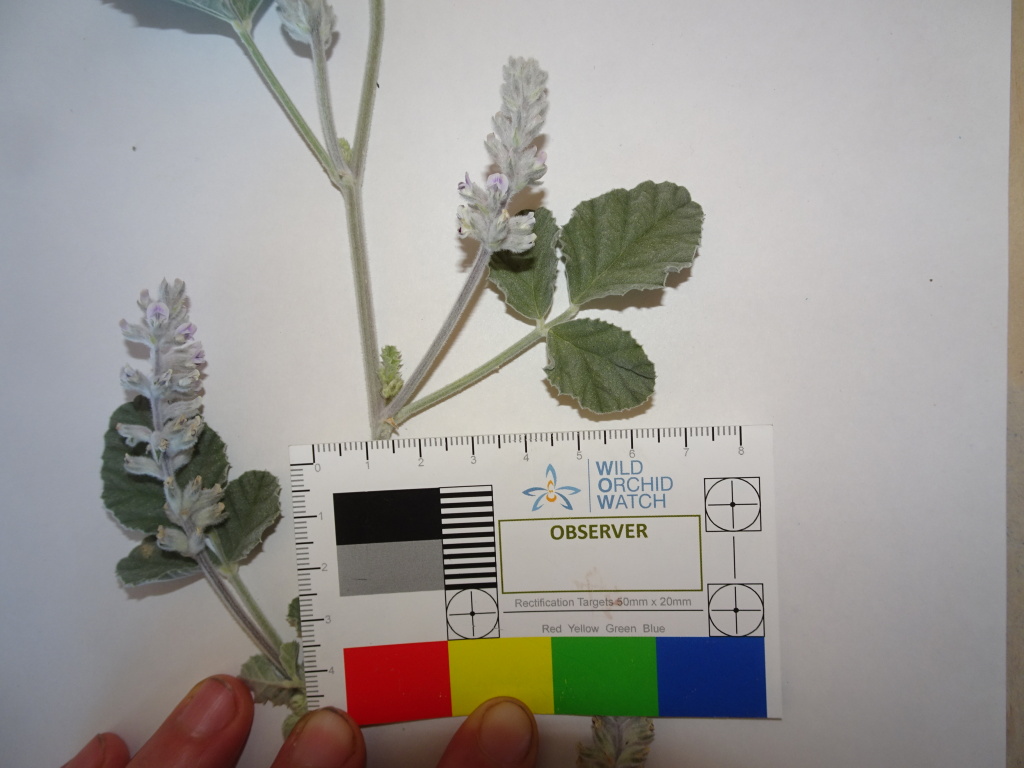Cullen pallidum
(N.T.Burb.) J.W.Grimes Woolly Scurf-peaErect or ascending, finally decumbent perennial herb; stems to c. 60 cm long, striate, densely grey-pubescent or villous, glands not visible. Leaves pinnately trifoliolate, 3–15 cm long; leaflets more or less ovate, 2–5 cm long, 10–35 mm wide, both surfaces densely grey- to white-tomentose, glands somewhat obscured, apices obtuse, margins irregularly toothed, undulate; terminal petiolule 3–15 mm long; stipules lanceolate, acuminate, 4–11 mm long. Inflorescence rachis mostly 2–8 cm long; peduncles mostly 2–10 cm long, usually shorter than subtending leaves; flowers mostly in 3s along rachis; pedicels to c. 2.5 mm long; bract ovate-lanceolate, to c. 8 mm long, villous. Calyx tubular, 4–8 mm long, villous with white hairs sometimes mixed with black, teeth unequal, upper 2 longer than lateral 2, all 4 shorter than calyx tube, lower one longer than calyx tube; corolla to c. 7.5 mm long, purple, white basally, persistent in fruit. Pod reniform, 3–4 mm long, included in calyx, villous, black; seed 1, c. 3 mm long, brown. Flowers mainly spring and summer.
LoM, MuM, RobP. Also NT, SA, Qld, NSW. Endangered in Victoria where known from very few collections in the far north-west of the State, growing in deep sand.
Cullen pallidum can be distinguished from C. discolor and C. patens in the field by its erect or ascending habit and by flower colour. The purplish flowers of C. pallidum are of a paler hue than those of C. patens and the flowers of C. discolor are mostly white. In herbarium material it can be extremely difficult to distinguish these 3 taxa (e.g. Lee 1980).
Jeanes, J.A. (1996). Fabaceae. In: Walsh, N.G.; Entwisle, T.J., Flora of Victoria Vol. 3, Dicotyledons Winteraceae to Myrtaceae, pp. 663–829. Inkata Press, Melbourne.
 Spinning
Spinning


